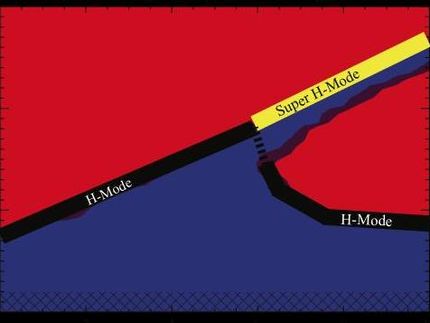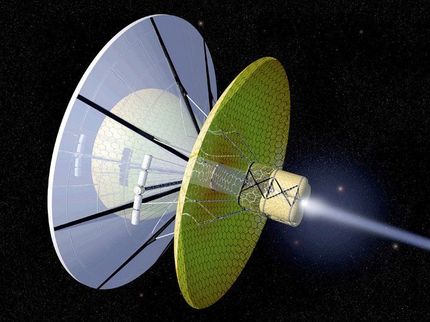A small, modular, efficient fusion plant
New design could finally help to bring the long-sought power source closer to reality
It's an old joke that many fusion scientists have grown tired of hearing: Practical nuclear fusion power plants are just 30 years away - and always will be.
But now, finally, the joke may no longer be true: Advances in magnet technology have enabled researchers at MIT to propose a new design for a practical compact tokamak fusion reactor - and it's one that might be realized in as little as a decade, they say. The era of practical fusion power, which could offer a nearly inexhaustible energy resource, may be coming near.
Using these new commercially available superconductors, rare-earth barium copper oxide (REBCO) superconducting tapes, to produce high-magnetic field coils "just ripples through the whole design," says Dennis Whyte, a professor of Nuclear Science and Engineering and director of MIT's Plasma Science and Fusion Center. "It changes the whole thing."
The stronger magnetic field makes it possible to produce the required magnetic confinement of the superhot plasma but in a much smaller device than those previously envisioned. The reduction in size, in turn, makes the whole system less expensive and faster to build, and also allows for some ingenious new features in the power plant design. The proposed reactor, using a tokamak (donut-shaped) geometry that is widely studied, is describedin a paper , co-authored by Whyte, PhD candidate Brandon Sorbom, and 11 others at MIT.
Power plant prototype
The new reactor is designed for basic research on fusion and also as a potential prototype power plant that could produce significant power. The basic reactor concept and its associated elements are based on well-tested and proven principles developed over decades of research at MIT and around the world, the team says.
"The much higher magnetic field," Sorbom says, "allows you to achieve much higher performance."
While most characteristics of a system tend to vary in proportion to changes in dimensions, the effect of changes in the magnetic field on fusion reactions is much more extreme: The achievable fusion power increases according to the fourth power of the increase in the magnetic field. Thus, doubling the field would produce a 16-fold increase in the fusion reaction. "Any increase in the magnetic field gives you a huge win," Sorbom says.
Tenfold boost in power
While the new superconductors do not produce quite a doubling of the field strength, they are strong enough to increase fusion power by about a factor of 10 compared to standard superconducting technology, Sorbom says. This dramatic improvement leads to a cascade of potential improvements in reactor design.
The world's most powerful planned fusion reactor, a huge device called ITER is expected to cost around $40 billion. Sorbom and the MIT team estimate that the new design, about half the diameter of ITER (which was designed before the new superconductors became available), would produce about the same power at a fraction of the cost and in a shorter construction time.
But despite the difference in size and magnetic field strength, the proposed reactor, called ARC, is based on "exactly the same physics" as ITER, Whyte says. "We're not extrapolating to some brand-new regime," he adds.
Liquid protection
Another key advantage is that most of the solid materials used to line the fusion chamber in such reactors are replaced by a liquid material that can easily be circulated and replaced, eliminating the need for costly replacement procedures as the materials degrade over time.
"It's an extremely harsh environment for [solid] materials," Whyte says, so replacing those materials with a liquid could be a major advantage.
Original publication
B.N. Sorbom, J. Ball, T.R. Palmer, F.J. Mangiarotti, J.M. Sierchio, P. Bonoli, C. Kasten, D.A. Sutherland, H.S. Barnard, C.B. Haakonsen, J. Goh, C. Sung, D.G. Whyte, "ARC: A compact, high-field, fusion nuclear science facility and demonstration power plant with demountable magnets", Fusion Engineering and Design, 2015
Most read news
Original publication
B.N. Sorbom, J. Ball, T.R. Palmer, F.J. Mangiarotti, J.M. Sierchio, P. Bonoli, C. Kasten, D.A. Sutherland, H.S. Barnard, C.B. Haakonsen, J. Goh, C. Sung, D.G. Whyte, "ARC: A compact, high-field, fusion nuclear science facility and demonstration power plant with demountable magnets", Fusion Engineering and Design, 2015
Topics
Organizations
Other news from the department science

Get the chemical industry in your inbox
From now on, don't miss a thing: Our newsletter for the chemical industry, analytics, lab technology and process engineering brings you up to date every Tuesday and Thursday. The latest industry news, product highlights and innovations - compact and easy to understand in your inbox. Researched by us so you don't have to.






























































